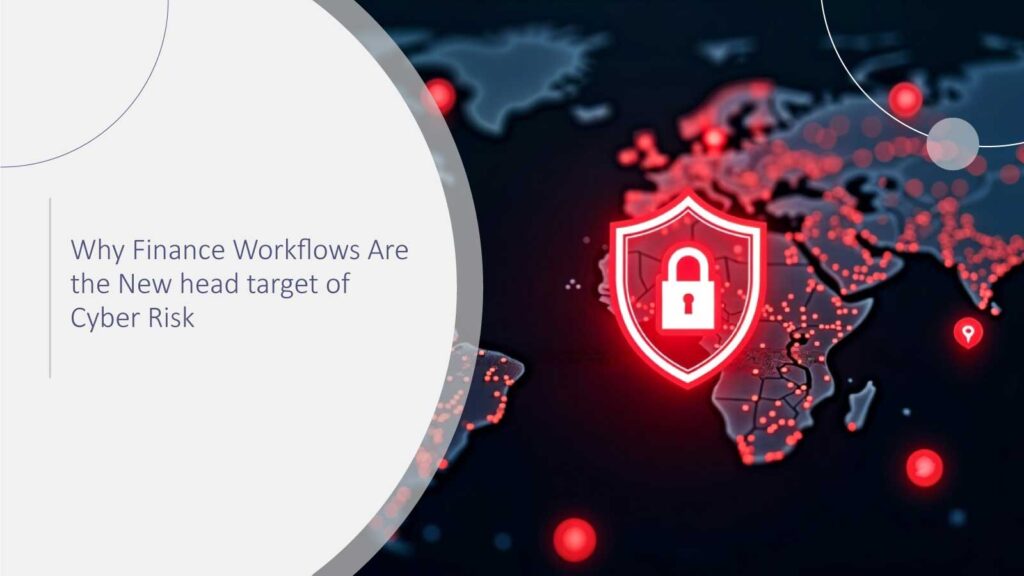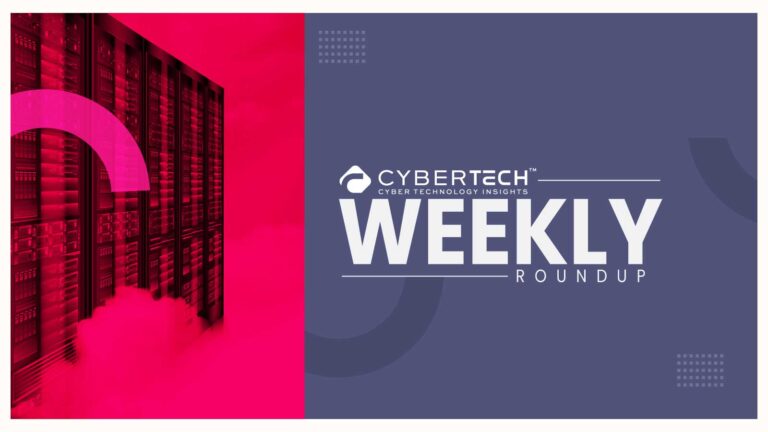In 2025, cyber threats aren’t knocking on the front door anymore; they’re slipping in through the back office and Finance Workflows.
While security teams continue to harden networks, endpoints, and cloud environments, threat actors have already begun shifting focus. Their new objective isn’t always the customer database or the company’s intellectual property; it’s the financial workflows that power day-to-day operations.
From vendor invoices to 1099 tax filings, these workflows are proving to be high-value targets, particularly in industries like construction and FinTech, where rapid growth, decentralized teams, and regulatory pressure converge. What used to be seen as internal paperwork has become a cybersecurity risk, and in many cases, a multi-million-dollar liability.
Just look at the numbers: Over $1 billion in IRS penalties have been issued recently due to compliance lapses in contractor-related reporting. These aren’t penalties for hacking incidents, but they often result from the very same weaknesses that make systems vulnerable to cyberattacks: poor process control, lack of visibility, and siloed decision-making.
So, what exactly is happening inside our finance operations that’s drawing the attention of cybercriminals and auditors alike?
What Are Finance Workflows, and Why Are They Important?
Before we explore the risks, let’s define the territory.
Finance workflows are the structured, repeatable processes that manage the flow of money and compliance within a business. These include:
- Accounts Payable (AP): invoice processing, approvals, vendor payments
- Accounts Receivable (AR): billing, collections, reconciliations
- Contractor & Vendor Onboarding: W-9/1099 processing, tax ID validation
- Compliance Reporting: tax filings, audit documentation, regulatory disclosures
In construction, for example, where subcontracting is the norm, these workflows must support thousands of vendors and contractors, many paid via non-payroll methods. In FinTech, real-time payment systems and digital platforms increase both the speed and complexity of these processes.
Modern finance workflows aren’t just internal; they span across multiple platforms, departments, and third parties. And every integration or manual step introduces a potential breach point.
Why Finance Workflows Are Prime Targets for Cyber Threats
The appeal of finance workflows to cybercriminals lies in a unique combination of opportunity, value, and visibility gaps.
High-Value Data
Finance systems are gold mines of sensitive information. From personally identifiable information (PII) to banking credentials, tax IDs, and contract terms, these environments are loaded with assets attackers can steal, encrypt, or exploit.
Unlike customer-facing systems, finance tools may lack advanced encryption or access controls, making them easier targets for unauthorized access.
Complex, Interconnected Systems
APIs are everywhere. Finance tech stacks now include ERP platforms, invoice automation tools, payroll systems, banking integrations, and tax platforms; all talking to each other.
But integration is a double-edged sword. While it improves efficiency, it also opens new vectors for attack. A vulnerability in a lightly monitored API can become a gateway into an entire finance operation.
Time Sensitivity Breeds Mistakes
Finance teams operate on strict calendars: month-end close, vendor deadlines, quarterly reporting, and tax filings. Cybercriminals exploit this urgency by launching scams like Business Email Compromise (BEC) or last-minute invoice fraud.
A fake invoice arriving during quarter-end rush has a much higher chance of being paid without question.
Lack of Cyber Oversight
Unlike IT-managed assets, many finance tools and workflows fall outside the direct supervision of cybersecurity teams. This results in shadow processes, outdated access controls, and inconsistent audit logging, all of which create blind spots for attackers to exploit.
In construction and FinTech, where decentralized operations and gig economy models dominate, these gaps are often even wider.
Real-World Consequences: More Than Just Stolen Data
While traditional data breaches grab headlines, the fallout from compromised finance workflows can be equally damaging, and often more complex.
Financial Theft and Fraud
Once inside finance systems, attackers can reroute payments, alter account numbers, or inject fraudulent vendors into the approval chain. In some cases, the losses can remain undetected for weeks or months.
Regulatory Violations and Penalties
Here’s where the financial and cyber worlds collide. A ransomware attack that delays tax filings? That’s a compliance violation. A fraudulent 1099 submission that goes unnoticed due to broken workflows? That’s a fine, potentially thousands of dollars per contractor.
One of the most overlooked aspects of finance-focused cyber risk is its ability to trigger regulatory enforcement. Authorities don’t always care whether your failure to file correctly was due to a breach. The penalties apply regardless.
Recent discussions in industry forums and upcoming webinars are now shining a spotlight on this very issue: how overlooked finance risks are leading to real-world financial penalties, especially in construction and digital-first sectors like FinTech.
Finance, Cyber, and Compliance: The Perfect Storm
We’re now at a tipping point where compliance management, cybersecurity, and financial operations must converge.
Let’s take the example of Zenwork, a digital compliance platform that helps companies handle large-scale 1099 filings, W-9 validation, and AP automation. Platforms like these are not just about digitization; they’re about visibility, control, and risk mitigation across finance workflows.
The sharp rise in penalties across the construction industry is just one signal. Another is the mounting pressure on FinTech startups and platforms to remain compliant while scaling fast, something that’s near-impossible without intelligent automation and secure workflow design.
Whether it’s a misclassified contractor or a compromised invoice tool, the outcome is the same: loss of control, revenue, and trust.
FinTech and Construction: Shared Pain, Shared Opportunity
While the verticals differ, the underlying vulnerabilities are remarkably similar. In construction, decentralized projects and field-level operations create inconsistent finance processes and poor data hygiene. Manual 1099 collection, spreadsheet-based AP tracking, and last-minute filings are common and risky.
In FinTech, the pace of innovation often outruns policy development. New payment features go live before audit controls are finalized. Third-party integrations lack proper vetting. And cybersecurity teams are too focused on customer-facing systems to monitor internal finance activity.
Yet both industries are starting to recognize a shared need: finance workflows must be secure, compliant, and transparent. Not just to avoid fines, but to earn trust in a digital-first world.
This is why finance-focused cybersecurity is becoming a key theme at industry events and digital discussions. Forward-looking CFOs are now joining CISOs at the table, not just to talk budgets, but to design secure finance architectures that work at scale.
The Path Forward: From Reactive to Proactive
If you’re a CFO or compliance leader reading this, here’s the reality:
The days of treating finance and cyber as separate domains are over. Finance workflows are now both operational pipelines and threat surfaces. And they need to be managed as such.
What does this look like in practice?
- Real-time validation of vendor information and tax forms
- Digital audit trails for every payment, approval, and tax filing
- Identity-aware access control across all financial platforms
- Regular workflow reviews and cyber risk scoring
Many companies are starting with a joint finance-security audit to uncover existing blind spots. Others are adopting modern AP automation tools that integrate with compliance frameworks by default.
But no matter where you begin, the key is to start now, because the threat landscape is already here.
Final Thoughts:
Finance workflows are no longer just about paying the bills or filing taxes; they are the nerve center of your business’s integrity.
In a world where cyber risk and regulatory oversight are growing in parallel, profitability is directly tied to security. And that means every misstep, every manual entry, outdated process, or undocumented approval has the potential to cost millions in fines, fraud, or fallout.
Construction firms, FinTech startups, and digital-first enterprises alike are now facing the same reality: If your finance workflows aren’t secure, your entire organization is exposed.
FAQs
1. If we already have cybersecurity tools, why are finance workflows still at risk?
Because finance systems often aren’t covered by IT security, they run separately and lack proper controls.
2. Can a cyberattack lead to IRS fines?
Yes. If it delays filings or causes errors, you’re still liable—intent doesn’t matter to regulators.
3. What are the signs that our finance workflows aren’t secure?
Manual processes, spreadsheets, no audit trails, or no visibility across platforms are all red flags.
4. Why is FinTech especially vulnerable?
Fast growth often means finance tools are added without strong security checks or oversight.
5. What should we do if we think there are gaps?
Start with a joint audit between finance and IT, then automate and lock down access.
Join fellow CFOs, finance leaders, and security experts in a high-impact webinar that breaks down the compliance-cyber intersection in today’s evolving threat landscape. Register here:
“$1 Billion in Construction Penalties: What CFOs Need to Know”
Explore how finance automation, smart AP workflows, and secure compliance practices can transform risk into resilience.





